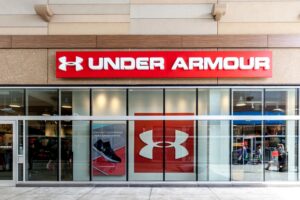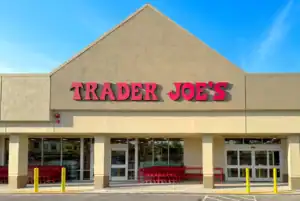
©Syda Productions via Canva.com
August 21, 2024
Will Highlighting Benefits Help Consumers Embrace Dynamic Pricing?
Arnab Sinha, BCG’s global topic leader for revenue management, believes the backlash around dynamic pricing is growing as “more frequent and less predictable” price changes across varied goods and services make it harder for customers to see the benefits.
“A company’s ability to use dynamic pricing depends on how customers perceive the price changes,” Sinha said in a blog entry. “Do customers think the company is just trying to make an extra dollar for itself, or are the price changes tied to something they can see, feel, or experience as a benefit?”
He noted that dynamic pricing is a common practice in buying airline tickets and hotel bookings as well as in using ride-sharing apps. Examples of obvious benefits from the practice that consumers readily recognize include lower prices on off-season travel, senior citizen discounts, and grocery items reduced at the end of the day.
Sinha’s suggestions for companies experimenting with dynamic pricing include understanding customers well enough to adjust prices to “each customer’s perception of value,” creating a “compelling story about fairness and value” of the practice with the benefits clearly spelled out, and avoiding over-relying on data science and algorithms.
Dynamic pricing endured a heap of negative coverage in recent years, starting in 2022 when tickets to Bruce Springsteen and Taylor Swift ended up costing fans thousands of dollars as Ticketmaster’s algorithms adjusted prices to demand far outstripping supply.
Earlier this year, JetBlue caught flack for charging baggage-checking fees based on the day of departure. Wendy’s this past February received major backlash as plans to experiment with dynamic pricing led to speculation that prices would surge during peak times. The fast-food chain later clarified that prices would only be discounted during slower times.
At retail, Amazon already has a reputation for continually fluctuating prices based on demand, but dynamic pricing has the potential to extend to physical stores. Sens. Bob Casey, D-PA, and Elizabeth Warren, D-MA, wrote a letter earlier this month to Kroger CEO Rodney McMullen expressing concerns over electronic shelving labels (ESLs) enabling “dynamic price gouging.”
A quarter of Americans say they would only spend money at a business that uses dynamic pricing when prices are down, according to a recent NerdWallet survey.
Explaining the benefits of dynamic pricing without sparking fears over surge pricing appears to be a primary hurdle.
In a Wall Street Journal column, Spencer Jakab, editor of Heard on the Street, suggested Wendy’s could have rolled out a “Happy Hour” or an “Early Bird Special” to demonstrate the potential of dynamic pricing to deliver savings.
In a column for Harvard Business Review, Marco Bertini, a marketing professor at Barcelona’s Ramon Llull University, said consumers need to understand how dynamic pricing can be “mutually beneficial.” He urges firms to help customers “game your system,” offering incentives or nudging them to capitalize on the benefits of lower prices — as well as shorter lines and faster service — during non-peak time periods or slower weather-related times.
The phrase “dynamic pricing,” he added, “conjures up images of algorithms directing our lives beyond our control,” and different terminology may reduce the emphasis on upward price changes. He wrote, “If a company frames the different periods of higher or lower prices as separate offerings — each with different benefits and a different value proposition — customers will feel more empowered to make better choices and adjust their behavior.”
McKinsey said prices lowered as a result of dynamic pricing should be called out or advertised, but any upward price adjustments shouldn’t be dramatic based on the category. McKinsey wrote, “Consumers expect airfares to change constantly, but they expect the price of a jar of pasta sauce or a bottle of shampoo to stay fairly consistent.”
Discussion Questions
Is the backlash to dynamic pricing because consumers don’t fully understand the potential benefits of lower prices?
Would promoting the benefits only call out the downside of higher surge pricing?
What overall advice do you have for retailers experimenting with dynamic pricing?
Poll
BrainTrust
Paula Rosenblum
Co-founder, RSR Research
Georganne Bender
Principal, KIZER & BENDER Speaking
Mark Self
President and CEO, Vector Textiles
Recent Discussions







Consumers are naturally suspicious of dynamic pricing. The underlying problem is that dynamic pricing is largely a tool that benefits retailers rather than consumers because it is about profit and revenue maximization. That means creating a patchwork of winners (people who pay less) and losers (people who pay more). Psychologically, people prefer certainty over risk which is why there is an aversion to dynamic pricing. The feelings of loss are also much stronger than the feelings of gain, which is why those who lose out have an outsized negative reaction.
The caveat in all of this is whether consumers notice dynamic pricing or not. In certain areas like flights, most people do not travel regularly so there are lower set price expectations. Supply is also more limited, so people accept that traveling on popular days or times will be more expensive. These things do not apply to retail where people are more aware of prices and supply is not as limited or finite.
Ah, you have been reading Daniel Kahneman.
McKinsey is right: Consumers expect airfares to fluctuate but they also expect the price of commodities like pasta sauce and shampoo to stay fairly consistent.
As a consumer I will never embrace dynamic pricing. Telling shoppers that it’s mutually beneficial or teaching them how to “game the system” is ridiculous.
No, the backlash to dynamic pricing is that it’s weird. How do you budget? How much do you give your kid if you send her out for a – pick something – a loaf of bread?
I have always said this is a non-starter for consumers, and that the first time you see a price rise while you’re standing in front of the product is the last time that shopper goes to that retailer. For real.
We keep insisting on looking at this as the retailer, not as the consumer. For the consumer, it’s just weird.
If the message is “we’re changing prices to provide better value for you” that’s a non-starter. Your sainted grandmother wouldn’t believe that for a moment, and neither will you.
No Tom, the backlash is because they understand all too well the dis-benefits – or really the motivation: to squeeze out every nickel possible (the explanation – i.e. excuse – seems disengenuous: retailers already know how to discount items when they don’t sell) Wendy’s had the rigth idea when they empasized the price departures will be down rather than up.
Dynamic pricing makes sense for airlines and Uber, and sporting events and rock concerts. However, it will be a disaster for supermarket use.
The benefits that supermarkets might derive from dynamic pricing are far outweighed by their negative effects on consumers.
For instance, customers might see the price of essential items like milk or bread fluctuate wildly based on demand, leading to frustration and a lack of trust in the pricing system. This could result in a backlash against the store and drive loyal customers away. Consumers will be forever resentful and distrusting.
To maintain consumer trust, it is better to use consistent pricing models with occasional sales events.
Consistent pricing models offer consumers a sense of predictability and reliability. Furthermore, they foster long-term loyalty between the store and its customers.
Customers are also able to budget and plan their purchases more easily with consistent pricing because it reduces confusion and frustration. Db
Dynamic pricing has been in play for quite a while across the retail industry. However, based on our experiences with Uber, Lyft, airlines, and hotels, there is a natural apprehension about dynamic pricing as to its true value proposition, as it is often synonymous with surge pricing strategies based on demand cycles. This is also consistently at play in both Amazon and Walmart’s commerce platforms and marketplaces.
The core strategies for leveraging electronic shelf labels and dynamic pricing capabilities are executing pricing strategies at scale, driving efficiencies, and reducing the operating costs of mass price changes. It all depends on execution and the store formats that this is done in. ESLs can empower retailers to:
Enable real-time, accurate price updates and dynamic content displays for retail media strategiesEnhance the in-store shopping experience and build customer trustPromote sustainability by reducing paper wasteStreamline operations, with seamless integration with inventory and pricing systemsProvide the agility to respond to market changes and ensuring there are value-centric offers for customers at scale
Consumers, including me, distrust dynamic pricing in commodities because they’re commodities, unlike airfare, hotels, and laptops on Amazon. Also, talk about bad timing.
Rolling out DP programs when consumers are hyper-aware of even a few cents difference in price during an extended inflationary period. Not wise.
ESL (electronic shelf label) pitches contain numerous benefits for the retailer from labor savings to pricing data integrity to improved out of stocks. It’s compelling for sure, but in a world where inflationary pressures have consistently gut punched wallets, the primary expectation of consumers is stable grocery prices. McKinsey is spot-on with their pasta jar assessment. Shoppers are neither buying plane seats nor concert tickets in the grocery store. They’re buying staples for their families. They want consistency. No upward price change based on time of day is going to keep shoppers coming through the door.
I think the backlash on dynamic pricing is an over-reaction to potential misuse. Don’t judge the benefits of electronic shelf labels (ESLs) based on negative perceptions on how you fear retailes will use the dynamic capabilities of ESLs. ESLs help retailer save employee time of manually printing and changing paper price labels on shelves. Another big benefit is price accuracy. How often have consumers had to call the attention to the cashier that the price a product rings up for is different than the shelf label. You won’t have to do that anymore. Don’t throw the baby out with the bath water!
This depends on what is being sold. Going to a movie matinee? Sure-you would expect to pay less. Paying more for a seat in the middle of the aisle? Not sure about that one. Moving to to retail, haven’t we already trained consumers to wait for big sales for things like flat screen TV’s, etc? So why wouldn’t retailers model out what it would take to get people buying groceries at traditionally slow times of the day, in order to smooth out labor scheduling challenges, etc.?
The problem right now is people think dynamic pricing =they are getting hammered when they should not. Highlight when prices are lower and see what happens.
The article advised retailers to extoll the benefits of dynamic pricing without really outlining said benefits. Also, adjusting prices to “each customer’s perception of value” to create a “compelling story about fairness and value,” would seem to point to personalized pricing, which opens up a whole new can of worms. Although ESLs and dynamic pricing go hand-in-hand, there is an opportunity to address them separately. Touting the benefits of ESLs (e.g. worker productivity and satisfaction, cost savings that are passed on to customers) would seem to be an easier path than rationalizing dynamic pricing. ESLs are tangible, dynamic pricing is triggering.
Consumers aren’t dumb. Just because they expect dynamic pricing for airline tickets or on Amazon doesn’t mean they like it or see any benefits from it. They accept that they have to do it to use the service. When you have a monopoly or when the industry colludes on pricing models, they have no choice. It’s been a long time since I’ve heard anyone say they felt like any airline treated their customers like anything other than cattle.
Comparing lowering prices during happy hour as an example is a far cry from the dynamic pricing strategies discussed here. Regarding loyalty with lower prices is also a known variable that, as a customer, I can choose to participate or not. I know that if I visit my favorite watering hole at a certain time, I can get a deal. I make the choice regarding the value of going early or late, and I know the consequences. In this model, the retailer creates winners and losers based on variables outside the consumer’s control. Imposing higher prices on me because I happened to visit the store at the wrong time, all to drive more revenue for the retailer? I’m not sure there’s a good argument to tell the people in the “loser” category that this somehow benefits them. Consumers will adjust angrily if this becomes the norm. I anticipate some new campaign topics in the future around this.
Consumers have been experiencing dynamic pricing forever and still are. Wasn’t the Blue Light Special dynamic pricing? Isn’t Happy Hour dynamic pricing? Isn’t “you have six more minutes to get this price” dynamic pricing for online shopping? Is 10% off for seniors on Tuesday morning dynamic pricing?
The difference is in communication. If the shopper thinks they just won the lottery at a lower price, that’s good. If the price is higher today than yesterday, that’s bad. If the price is lower during those special times, that’s good.
The message with dynamic pricing should always be “the price is lower,” never “the price is higher.” It is all in the communication.
The potential benefits of lower prices are self-evident, but the benefits of higher prices are not. That’s the problem with applying dynamic pricing to commonplace items like fast food value meals — what is the benefit, exactly, of paying more than you have to for the same Wendy’s combo meal? Unless there is some added product enhancement attached to the higher price, it’s going to be a tough sell.
Most people like predictability. The airlines are the only ones that appear to have gotten away with demand-based dynamic pricing but I bet the many travelers still resent having to bargain hunt and trying to figure out in which week of what month to book leisure travel. Applying dynamic pricing to other merchandise is going to continue to meet resistance and only those retailers with a pull-back strategy should attempt it. Should the prices of TVs go up a week before the Super Bowl or other major televised event? The objective of dynamic pricing should be to lower prices for consumers from a normal or standard price and not the other way. I long for the days (long gone now) when I knew that a domestic airline flight was going to be 25,000 points, period.
t
This quickly turns into a question of trust. Just because technology enables you doesn’t mean you should. No amount of “highlighting benefits” can convince consumers to embrace dynamic pricing; it just doesn’t feel right or fair for supplies of basic goods. Websites have applied dynamic pricing algorithms with mixed results. From a personal experience, I visited an online jewelry site and priced a specific item. A few days later, I revisited that item and saw a ten percent increase, and two days later, there was another sizeable increase. Consumers may reluctantly accept pricing based on the law of supply and demand in some industries like airfares and cruise lines, but applying it to essential items, a day-part meal, or easily comparable products with price transparency is simply untenable in today’s society as we know it. The drive to optimize margins using technology should not undermine the trust a brand or banner has built with its consumers and customers.
The backlash to dynamic pricing is because most consumers lack insight into how the price has changed. If price reductions are highlighted in green (like stock market ticker symbols scrolling across news channels to indicate positive results), consumers can immediately identify bargains.
The retailers doing this the best earn customer trust with clear and accurate messaging. Messaging like “the best price in the last X days” clarify to customers what they are getting and appropriately incent action. McKinsey is also right, most retailer’s don’t manage how drastically prices raise and they should think about that as strategically as they think about the drops.